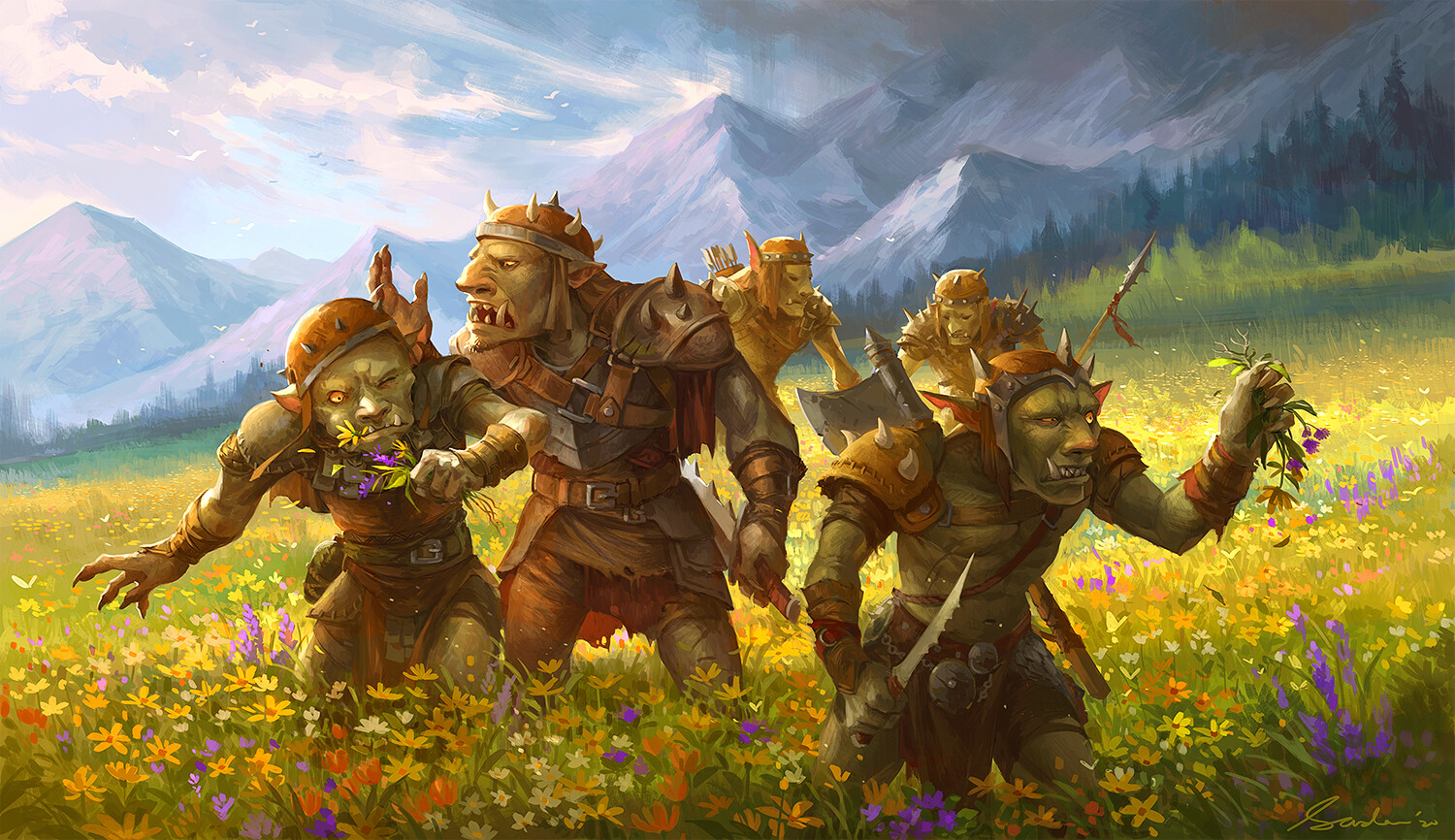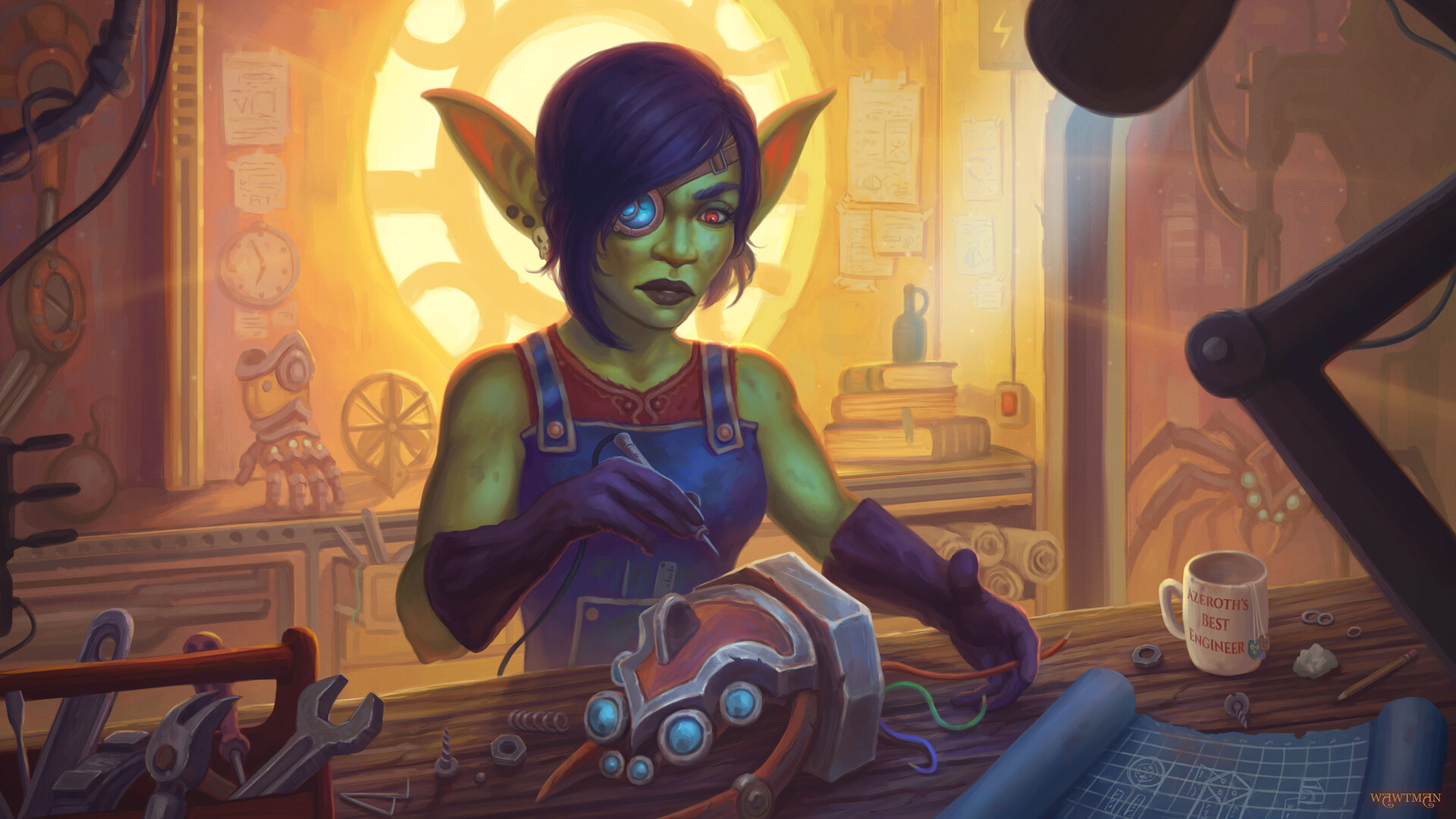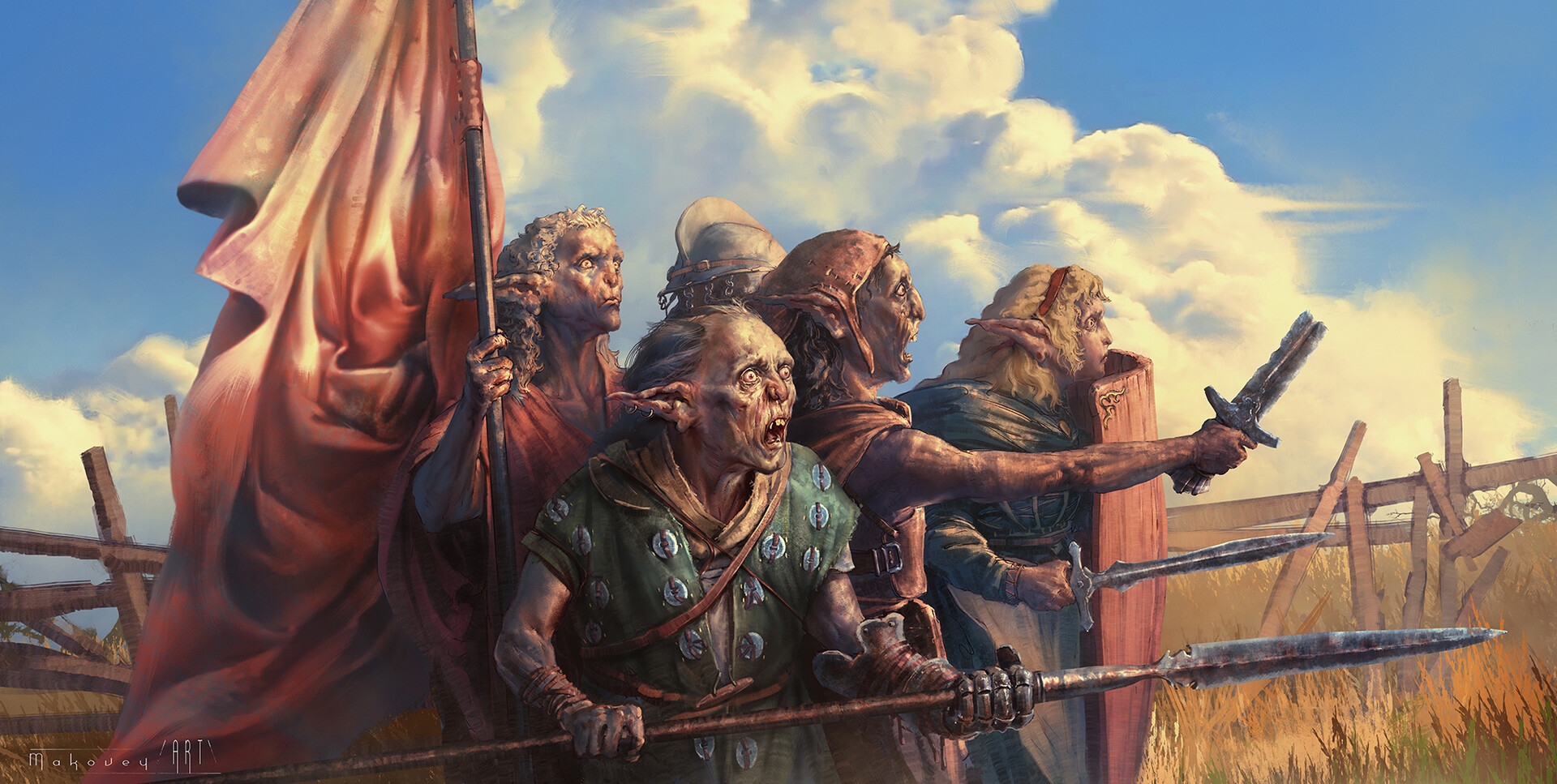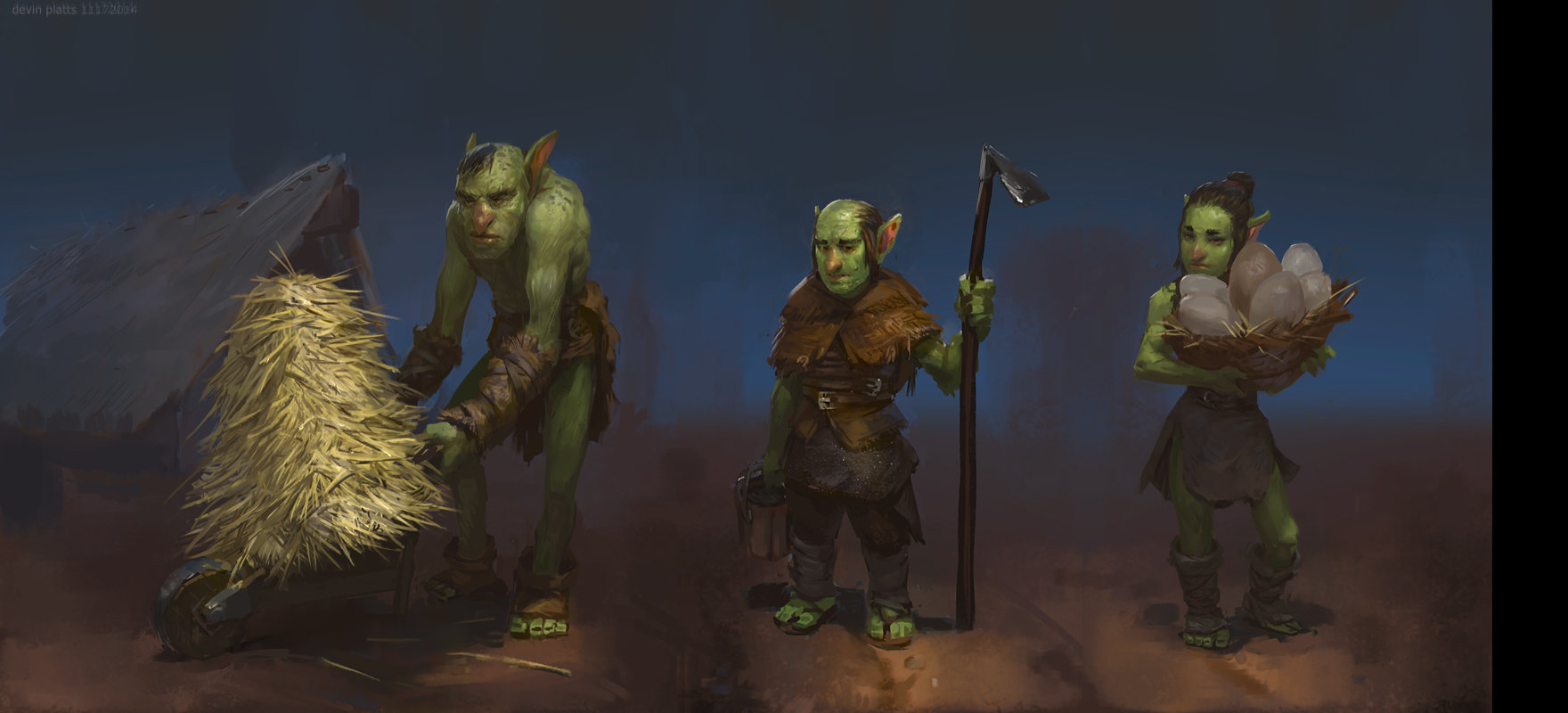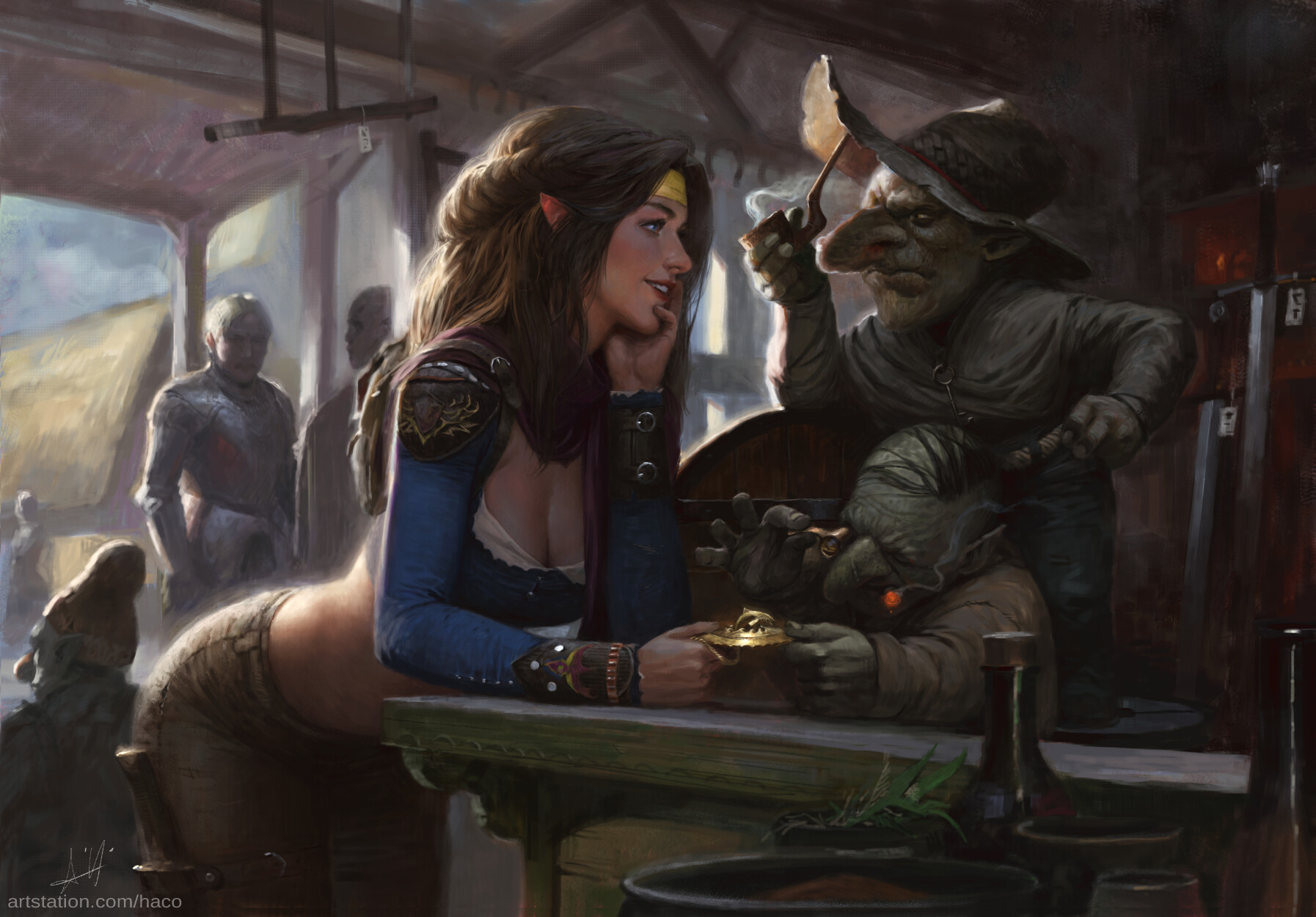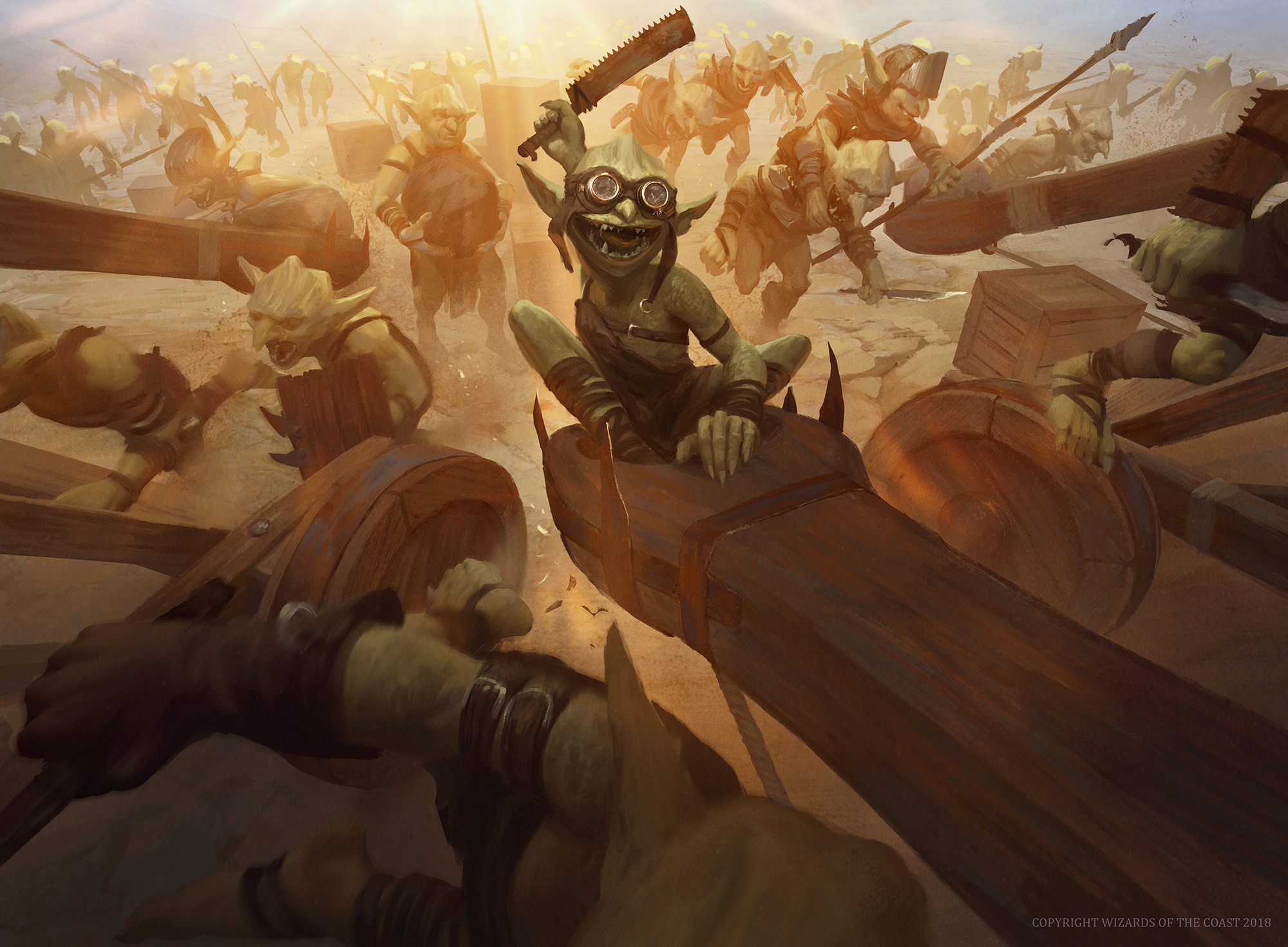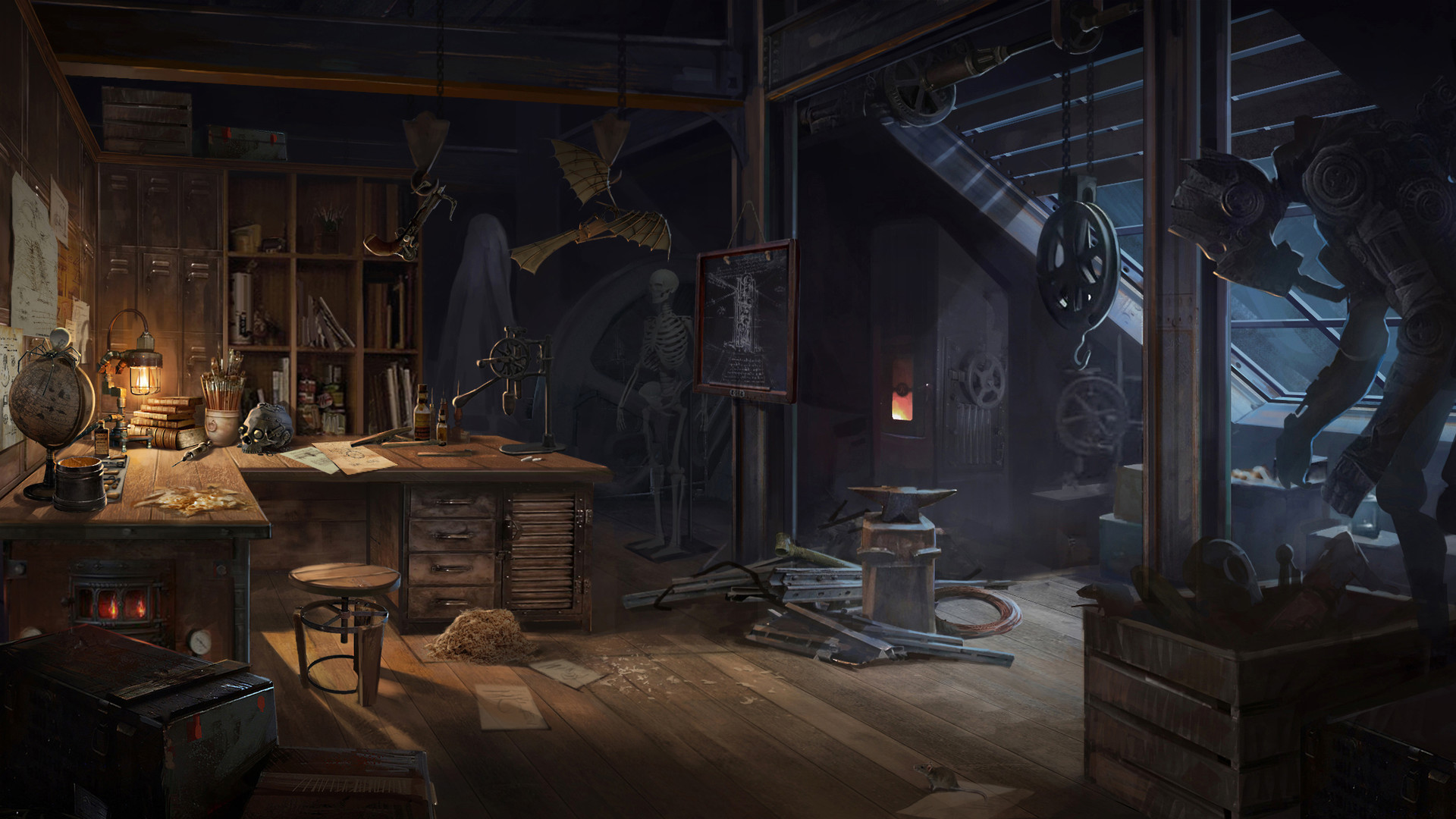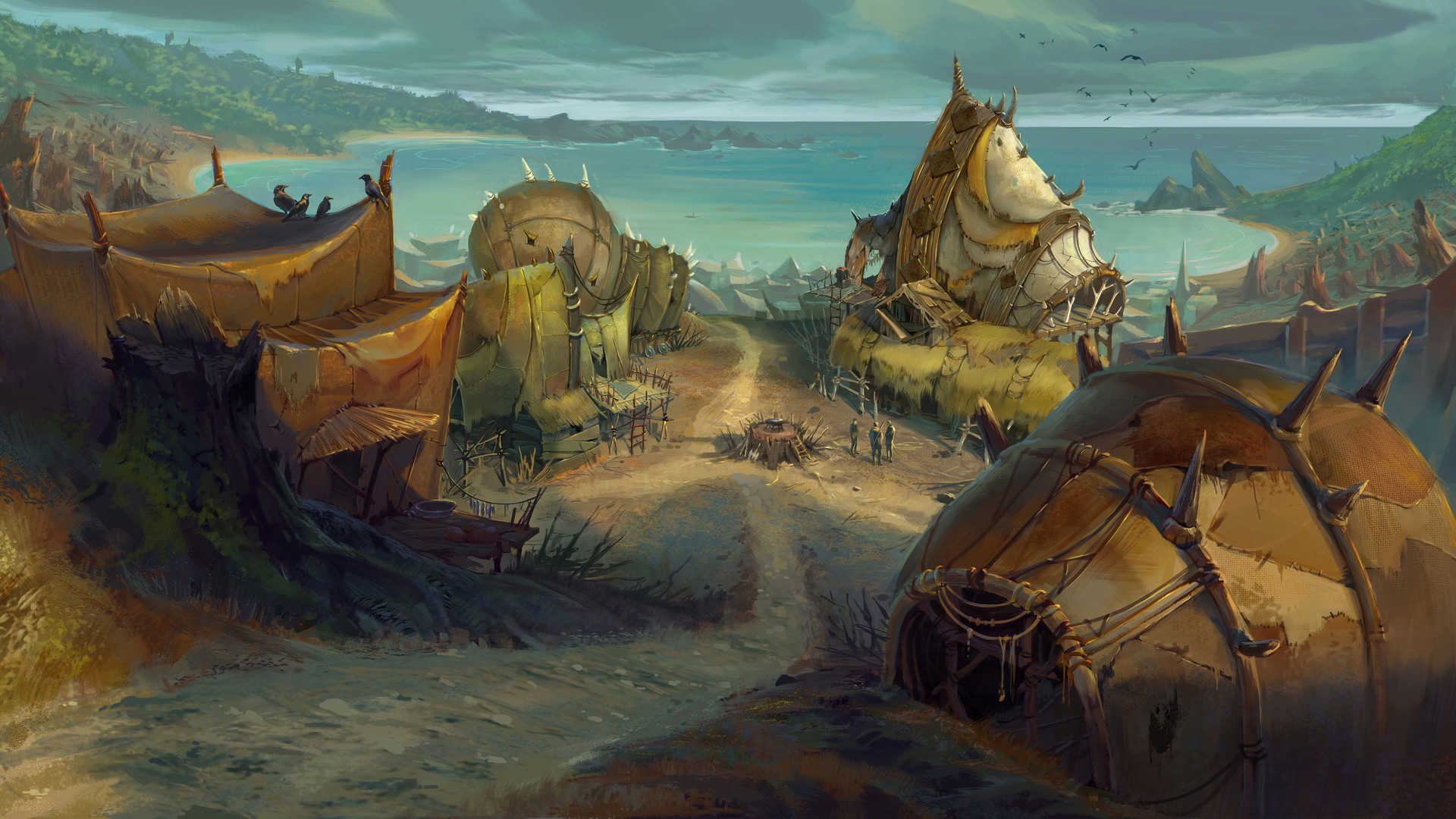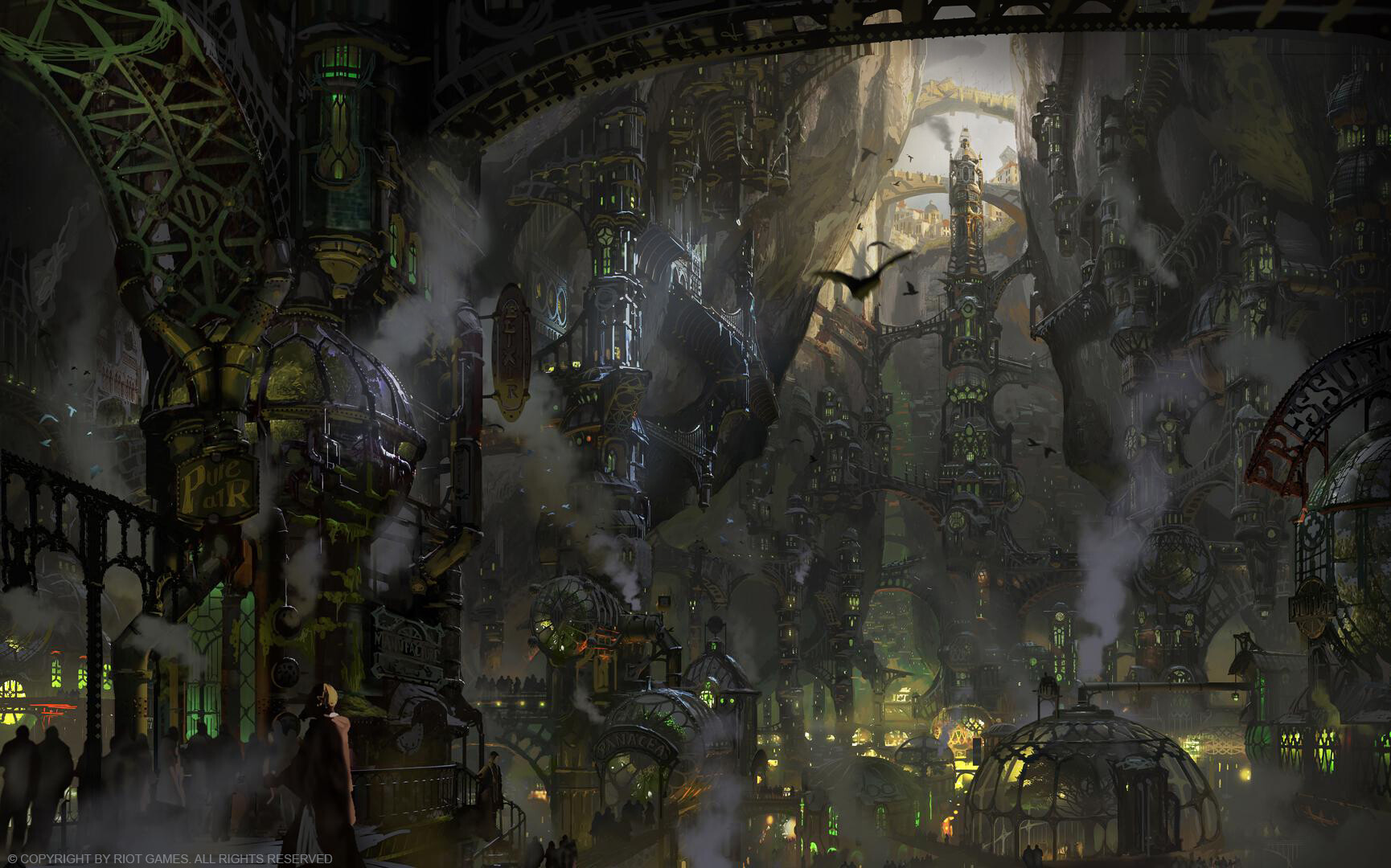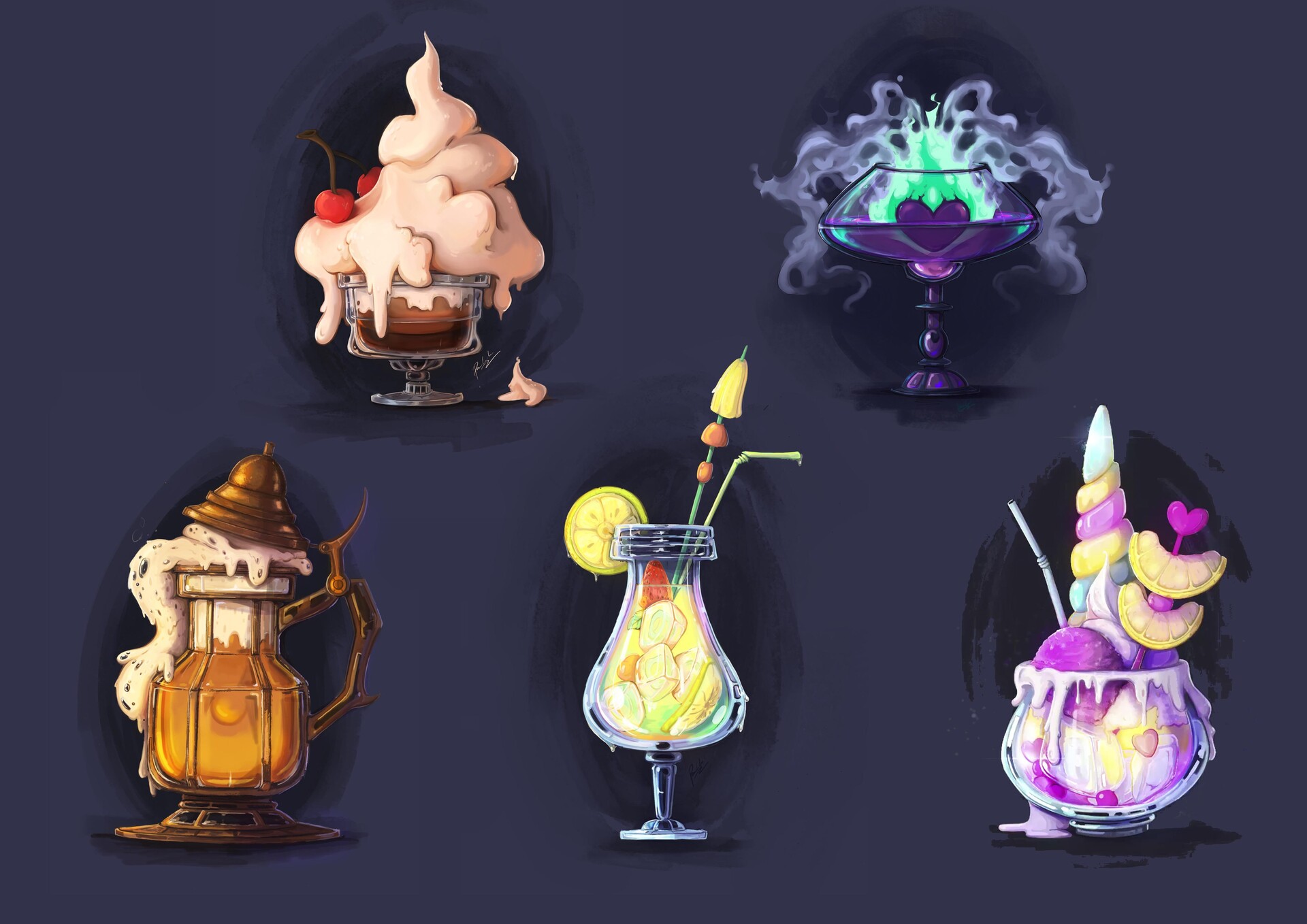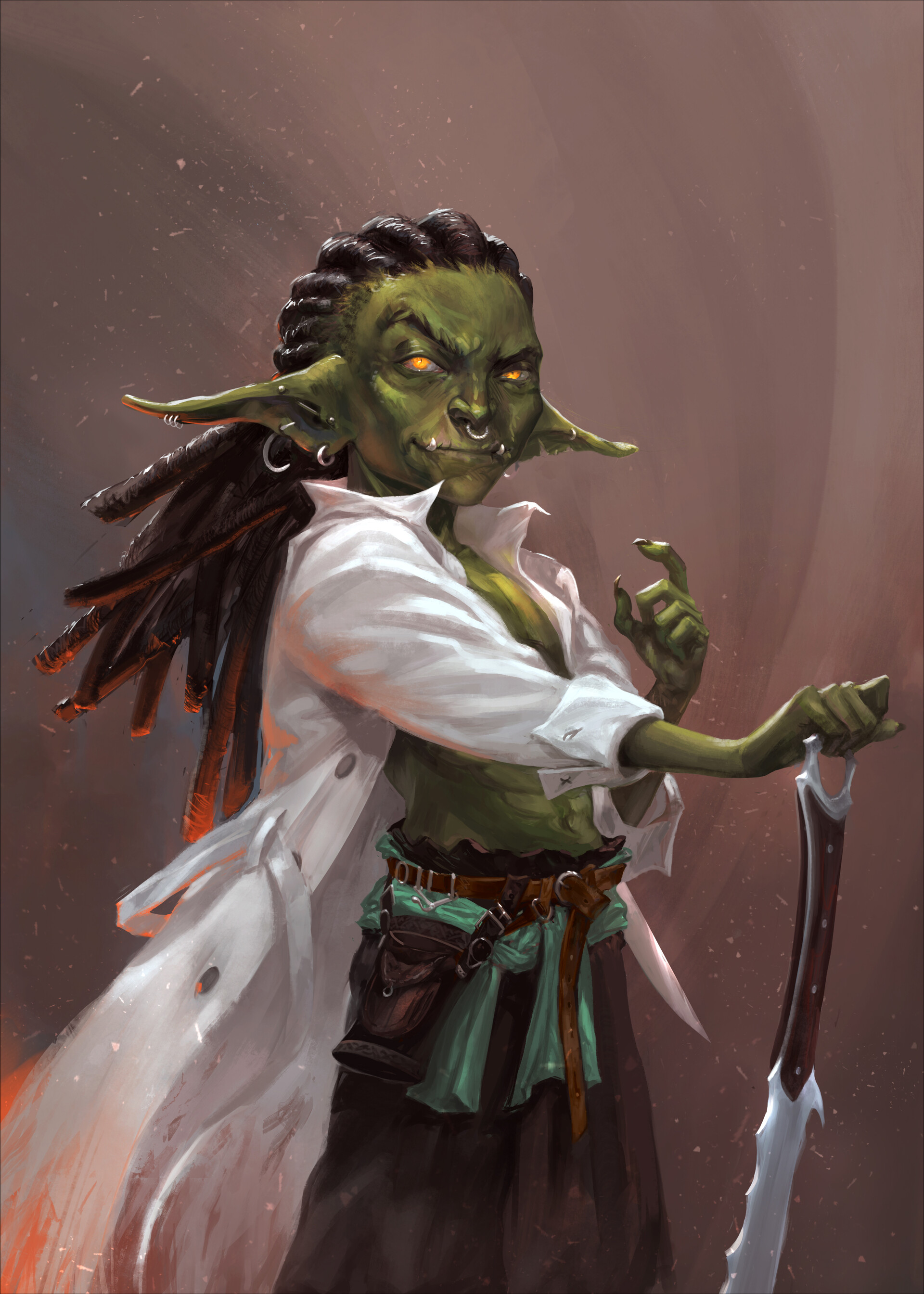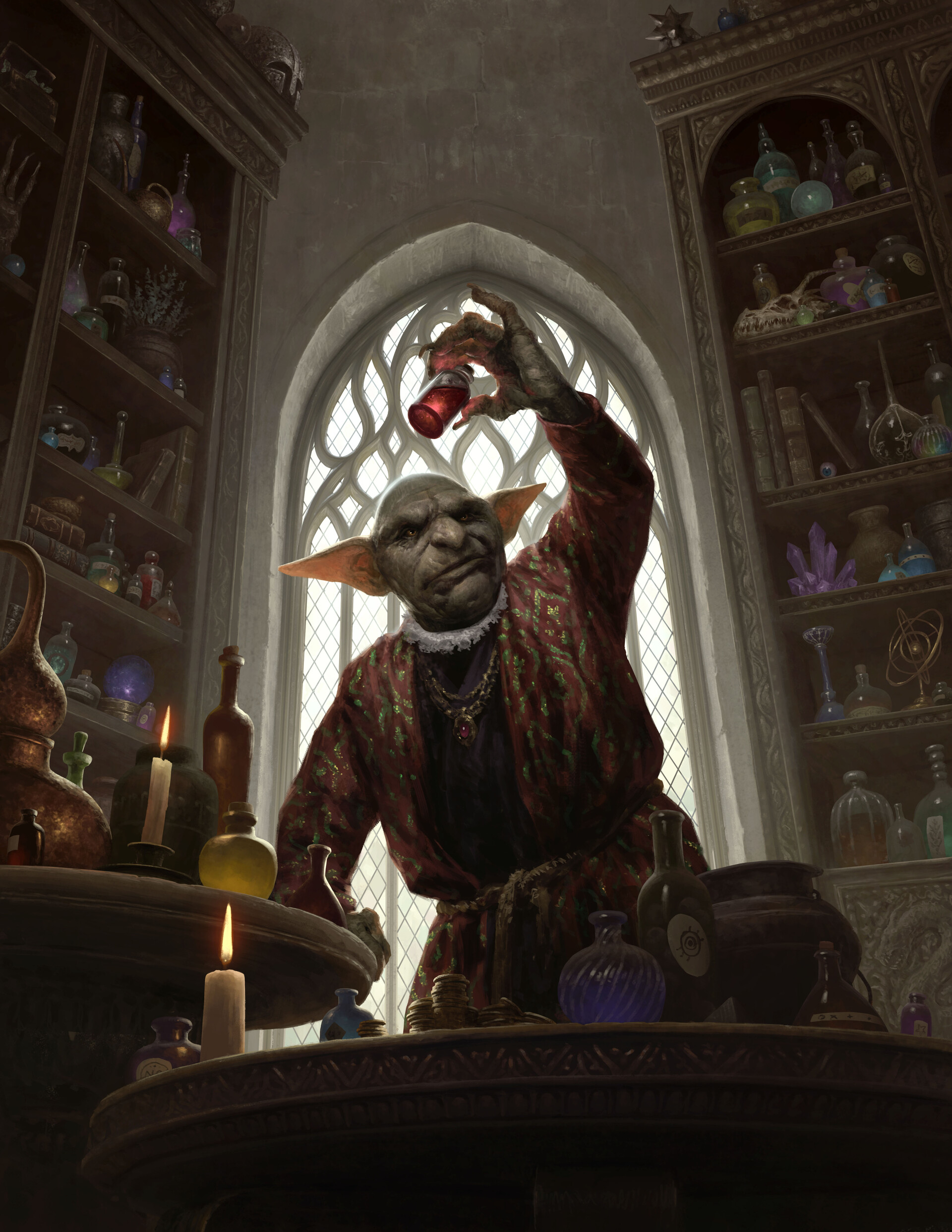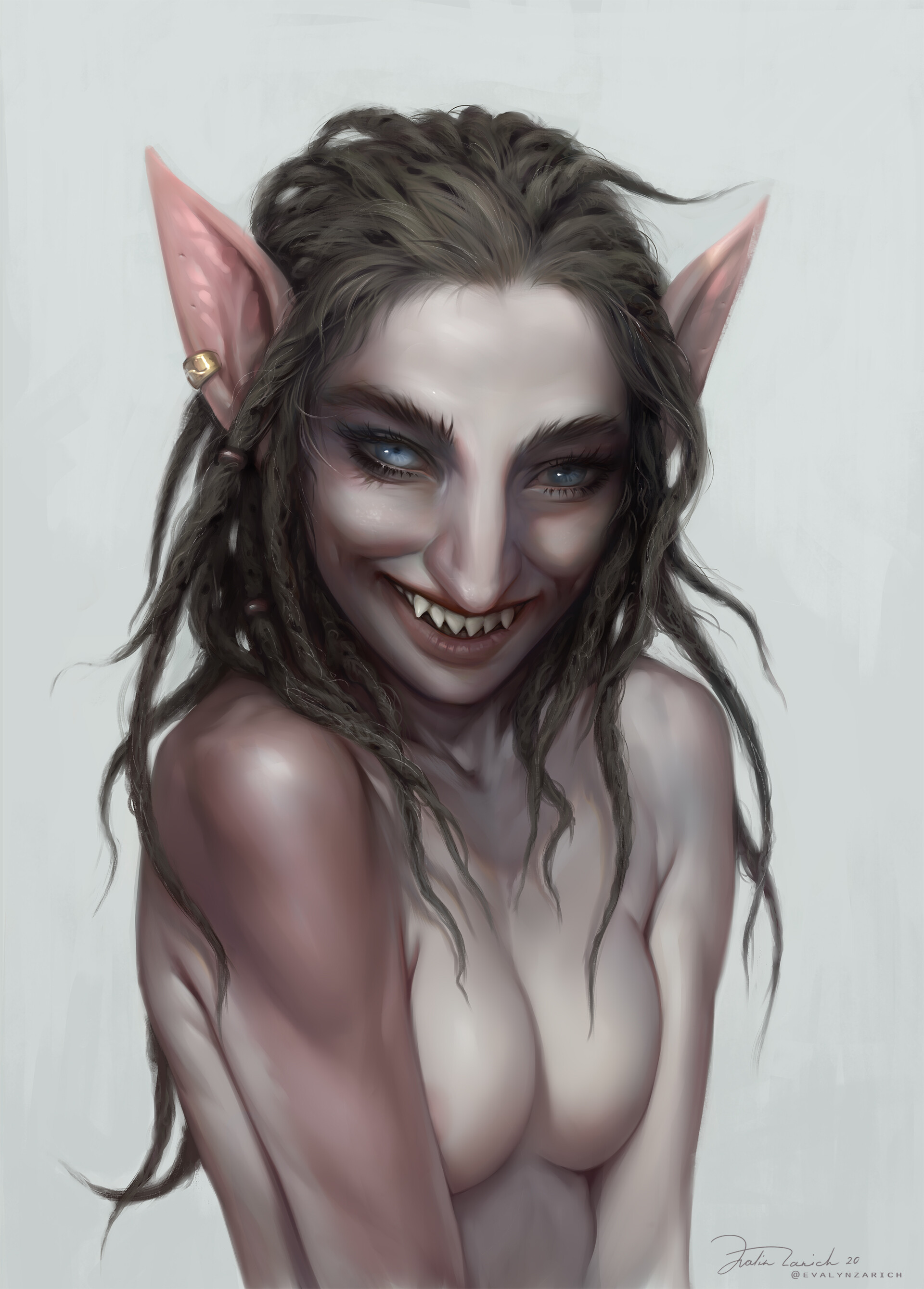Goblins
Crafty Rapscallions
Goblins are a diminutive race of goblinoids spread around the continent, with particular affinity for the Steel Valley. They have skin tones ranging from green to yellow to red to blue-gray, large pointed ears, and hair types and colors similar to humans. Rarely taller than four feet, they are taller than Halflings but shorter than Dwarves. Mistrust and persecution tend to follow them wherever they venture, and they have been given a reputation for being mischievous, greedy, possessing skills of low cunning, and being capable of all kinds of atrocities. Goblins in this region, sometimes called Vale Goblins, have an entrepreneurial spirit and a tendency not to take life as seriously as others. A somewhat irreverent people, they make little fuss about who they follow or what symbols they bow to. Instead, goblins tend to focus on personal gain, prosperity, and craftiness. They are known to be cunning engineers and inventive tinkerers throughout the Steel Valley.The Wild Scourge
In other regions, such as the desert of Asvathas or the forests of Ayrith, goblins often live out a more tribalistic lifestyle which some consider less cultured and sophisticated, forming tribes and clans or joining war bands of more fearsome races such as Orcs, Desert Elves, and Ogres. These people, sometimes called Wild Goblins, often raid and trade with nearby settlements without building anything particularly monumental or opulent. The aforementioned Steel Valley goblins tend to look upon their kin in these societies as relatives behind themselves in the story of their people, having been left behind. Despite this divide, one can encounter many a goblin of either persuasion throughout the continent in cities, towns, and tribes.Culture
Major language groups and dialects
They speak the Goblin language, a tongue shared with Hobgoblins and Bugbears. It is a guttural language that borrows scripts and many loan words from more dominant languages. Vale Goblins tend to borrow more from the Dwarves while Wild Goblins often borrow from Droth and Desert Elves depending on the region.
Culture and cultural heritage
The heritage of Goblins and their cousins Hobgoblins and Bugbears is a subject of significant debate among sages. For much of history, many figured Goblins were merely one of many underdeveloped humanoids straddling the line between mortals and beasts. Others posited origins in the Feywild, making them closer to redcaps and fomorians than Humans and Elves. However, in recent centuries, some scholars, particularly of Droth stock, have suggested they may be related to Elves. These theories were initially built upon extremely ancient writings uncovered from remains of High Elves in the Svaelyn Isles. These manuscripts, diary entries, and documents implied Goblins may have actually predated High Elves as residents of Svaelyn Isles. According to this theory, Goblins were the original people of the islands before being supplanted by the technologically superior Elves. Another theory born of the original suggests, controversially, that Goblins may have been the precursor to Elves. The theory goes that some Goblinoids from the Svaelyn Isles were exposed to magic from the island's mines that infused them with arcane essence, thus changing them over time to be more like the elves we see today, leaving the Goblins who did not 'evolve' to retreat into the caves of the island after being supplanted by the newly evolved elves. Elves tend to be very hostile to these theories, and study of this kind is officially banned in the Svaelyn Isles.
Shared customary codes and values
On the contrary, Goblins have a tendency to do away with strict codes of honor and values. This is not to say they possess no moral or ethical tendencies, but they can be fickle with these concepts when they bump up against the possibility of personal gain. So while many Goblins would object to killing an innocent person for money, engaging in low cunning when it comes to business and honesty is usually not off the table. This cultural tendency is what lends Goblins the stereotype of being greedy, dishonest, and nefarious. One possible reason for this cultural tendency is the long history of Goblins being abused, mistreated, and lied to by other races seeking to dominate or enslave them. Obedience to authority or abstract concepts like bonds and honor can seem foolish to a people who have been repeatedly forced or tricked into submission by others above them.
That being said, particularly in conditions where they are a small, persecuted minority, Goblins will often stick up for and shield other Goblins. It is not unusual for gangs of Goblins to embed themselves in large, bustling cities to use somewhat underhanded or illicit methods to better secure the safety of their people. Goblins rarely cheat each other or sell out their own kind. Perhaps surprisingly, Goblins are not particularly vengeful or stubborn. They are quick to let slights go and are refreshingly willing to make business arrangements with people regardless of past experiences. This is in line with the Goblin tendency to prioritize gain over ideology.
Average technological level
Wild Goblins tend to fare no better than any other tribal people in their milieu when it comes to technology. Blunt weapons, blades, bows, percussion instruments, and perhaps a crossbow, likely looted from an unlucky traveller; these are the implements one can expect to find among them. Vale Goblins, however, are another topic entirely. Goblins of Steel Valley are known for their engineering prowess as tinkerers, inventors, artificers, and gunsmiths. They have invented many contraptions such as blowguns and all kinds of explosives from smokespheres to gunpowder pots to be lobbed at enemy forces, spreading fire and explosions wherever they land. While Vale Goblins show prowess in all areas of engineering and mechanization, they seem to have a particular fondness for eccentric designs and things that explode. Goblins launching themselves from cannons and trebuchets is not unheard of either.
Common Etiquette rules
Goblins tend to be impatient, impulsive, and fickle. They want things done and want them done fast. As such, they often have little patience for small talk, let alone anything else. Pleasantries and the finer points of etiquette are often lost on them. Everyday conduct can be rough, quick, and somewhat boorish. Goblins don't mind someone belching, breaking wind, cracking profane jokes, or putting bad dining manners on display. That being said, Goblins can be described as gregarious and pleasure-seeking, and they adore gossip and rumors, sometimes making them up for fun. Celebrations often last days or until everyone is too drunk to continue. Any activity of the Goblins is likely to be supported by a bottle of ale or a smoke pipe.
Vale Goblin domiciles tend to be cluttered, messy, and contain piles of tools, scrap metal, and half-finished contraptions. Not known for being tidy, Goblins often have their own internal systems for knowing where things are, even in the impressive hoards of their homes. Though they tend to be remarkably protective of their laboratories and workshops, as well as their secrets.
Common Dress code
Goblins don't appear to have any concept of modesty when it comes to clothes, or much else for that matter. Whether wild or urban, it's common for Goblins to dress in quite revealing clothes. As well, if they have any money at all, they're likely to flaunt it on their clothes, wearing gaudy or tacky items to show off their wealth. Wild Goblins tend to wear bones and teeth; mementos of their kills.
Art & Architecture
Wild Goblin architecture is crude and focused on utility rather than beauty. Much like other nearby tribal people, they tend to build using bones, animal hides, and the like. They possess no complex architectural knowledge.
Vale Goblins, on the other hand, have adopted building methods of the Gnomes, Dwarves, Droth, and Dark Elves, and improved upon them, or at least altered them in their own way. Steel Valley is known for being the primary region to find Goblin architecture in spades, especially in Cranktown where Goblin mechanists, artificers, and tinkerers use steel and machines to build and decorate their domiciles.
Foods & Cuisine
Perhaps due to their countless generations languishing in slavery and horrific conditions under the thumb of other races, Goblins have developed a strong immune system and an iron stomach. They don't get sick easily and can stomach many kinds of food other people might find repulsive. As such, Goblin cuisine is often thought of as inventive though not particularly appetizing. They are willing to eat basically any beast or monster at all, whether gnolls, dogs, harpies, or displacer beasts. Vale Goblins are known for their strong drinks such as Dwarfsbane and Gobbeer. However, in their own taverns, they're notorious for creating many eccentric drinks with unorthodox ingredients and perhaps a magical touch.
Common Customs, traditions and rituals
Ransoming is an exceedingly common practice among Wild Goblins. Highway robbery, kidnapping, and ransoming are all extortionate measures deployed by tribals and marauding gangs. An old joke among those of the central regions of the continent, when one travels, is to say, "I hope I run into goblins," implying that of all the dangers of the road, Goblins would be the most favorable because they almost always keep prisoners alive to be ransomed off. The Goblin adoration of wealth, lucky for their victims, trumps any need for bloodshed. One exception is in particularly zealous tribes; some shamans may insist on sacrificing prisoners to appease spirits and consecrate temples.
Ideals
Beauty Ideals
Goblins have a very individualistic sense of beauty. They tend to adopt trends from wherever they live, and individuals are mostly left to pursue their own styles regardless of how unorthodox they may be. In general, Goblins have affinity for shows of wealth, even gaudy, tacky, or ostentacious displays. Gold, large gems, mismatching but expensive garments are all likely to be worn by Goblins interested in showing off their gains.
Gender Ideals
Goblins are rather egalitarian when it comes to gender roles. Among Wild Goblins, both men and women fight, build, and work to enrich the tribe. Shamans tend to be, but are not always, women. Among Vale Goblins, similar trends continue in terms of egalitarianism, though shamans in such regions are uncommon, as Vale Goblins tend to be minimally religious.
Courtship Ideals
There is a long-standing tradition, especially among Wild Goblins, of kidnapping as a start to a relationship. Essentially, when a Goblin catches another's eye, the beholder may arrange for their kidnapping in dramatic fashion to take them away from their kin and spend time with their admirer. Perhaps strangely, this is not seen as a violation but a romantic act.
Related Locations
Though Elves rarely give them adequate credit, Vale Goblins have made significant strides in alchemy, especially in the realm of potions granting strange or risky effects to the user.
Goblins tend to be remarkably confident in their appearance. They don't mind trying odd clothing or going without it proudly.

